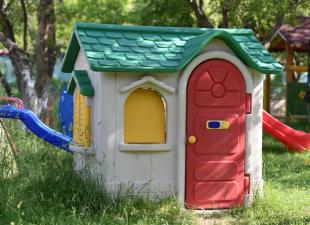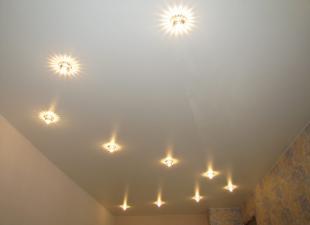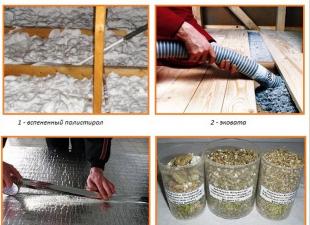Small droplets of condensate form on cold water pipes and sewers in apartments and private houses all the time. Most often, this process can be observed in the summer. Despite the fact that such a phenomenon is considered natural and quite natural, it causes many inconveniences to many. We are trying to come up with something, but still, seeing condensation on the pipes of cold water, we do not know what to do. Why are these droplets so harmful?
It would seem that harmless condensation can create significant problems for the owners of an apartment or house:
- Accumulating and uniting, drops of water end up on the floor and form whole puddles there, which can flow even to neighbors below. The floor covering can suffer from this so much that after a couple of years it will have to be changed.
- Harmless drops also greatly reduce the operating period of the water supply system, because this is an aggressive medium for metal. Pipes rust, deform and after a while will require major repairs.
- Condensation on pipes in a toilet, kitchen or bathroom can cause an unpleasant damp smell. But the smell is not that scary. It is much worse that the consequence of this is the formation of mold and mildew. Bacteria also multiply much more actively in a humid environment, exposing people living in an apartment to the risk of disease.
Causes of droplet formation
Why does condensation form on the pipes? Most often this happens due to the temperature difference between the surface of the pipes and the air in the room. And if there is no ventilation in the room, or it does not function well enough, then nasty drops appear necessarily. Too humid indoor air also contributes to this. Moisture quickly settles on risers and pipes that carry cold liquid. Each room has its own reasons for condensation.
Wet pipes in the toilet
In the toilet, the most common causes of condensate deposition on pipes include:
Condensation in the bathroom
To know how to deal with condensation on pipes in the bathroom, you must first find out the cause of this phenomenon. Some factors are similar to "toilet" ones, but there are some nuances:

How to get rid of moisture on pipes?
There are several ways to remove condensate on pipes:
Ventilation
Inspect the ventilation hole. If debris, cobwebs and dust deposits are found there, it is necessary to thoroughly clean all this. After that, it is advisable to purchase a special fan, which is installed instead of the ventilation grill. Plumbing and building materials stores have a ton of such devices from various manufacturers. They can vary in power, price and design.

New tank
In the toilet, the condensation problem can be solved by using a double cistern. Inside such a device there is an additional plastic container into which cold water is drawn. The outer walls do not cool too sharply, therefore they are not covered with water droplets. Of the minuses - the high cost of the cistern, which is most often sold only as a set along with the toilet.
Natural ventilation
If your bathroom or bathroom does not have supply and exhaust ventilation, organize life in your home so that everyone who takes a shower or a bath leaves the door wide open when leaving the bathroom.
Thermal insulation of pipes
How to get rid of condensation on cold water pipes by thickening the walls? To reduce the temperature difference between the air and the pipe, it is advisable to insulate the pipe. In stores you can find several types of modern insulation. They are characterized by high fire safety, high thermal insulation properties, ease of installation, tightness and a completely low price. Special cases made of foamed polyethylene - energoflex are very popular now. This material is very flexible, so there should be no problems with installation. And multiple closed pores will very well protect against temperature "inconsistencies".

To put a pipe in an energy flex, you need to do the following:
- dry the pipe thoroughly, after wiping it with a dry cloth;
- the energyflex pipe must be cut lengthwise;
- starting from one edge, gradually put on the insulating material over the entire pipe with cold water;
- the longitudinal seam of the energy flex is fastened with clamps or glued with glue;
- if the pipe is long, then, using several pieces of insulation, you need to glue its ends together;
- thereafter, the insulating material, if desired, can be painted with paint from an aerosol can.
Another pipe and polyurethane foam
How to eliminate condensation on a cold water pipe using scrap materials? If for some reason you cannot buy this modern insulating material, then you can try using a plastic pipe with a slightly larger diameter and polyurethane foam. The plastic pipe is also cut lengthwise and gently slid over the water pipe. Then foam is injected into the annular space. This simple design will last long enough and will not interfere with repair work.
Note: Instead of a plastic pipe, many use a metal corrugated pipe. You can also run polyurethane foam inside.
Rags
Another option is to use rags (bandages, any other cotton fabric) and epoxy putty. Before proceeding with the insulation of the pipe, it must be thoroughly cleaned of rust with sandpaper, and then degreased with acetone and treated with a rust converter. Only after that the first layer of putty is applied, which is immediately "bandaged" with a cloth. When this coating has hardened, another coat of epoxy should be applied.
Isollat and other similar materials
When it comes to thermal insulation of cold water pipes, the universal insulating material Isollat helps a lot. This is a thermos paint in the form of a water-based suspension. After drying, the liquid mass solidifies and turns into a polymer coating with excellent thermal insulation characteristics.

It is very simple to paint a pipe with Isollat:
- clean well with a "sandpaper" and degrease the pipe surface;
- apply one coat of insulating material;
- wait until dry;
- Use a silicone varnish to finish and gloss the pipe.
Moisture absorbers
In large construction supermarkets, you can find wonderful household devices - moisture absorbers. They will help you quickly and without hassle to cope with the problem. Their design is quite simple: an absorbent substance is placed in a plastic box. It will help not only eliminate condensation on the pipes, but also get rid of excessive moisture in the entire room.
Air conditioning
This is the most expensive option, but some people use it as well. Installing a climate controlled air conditioner will ensure a constant optimum humidity level.
What to do when water pipes condensate constantly? When you see water droplets on the waterways of your apartment, do not ignore the problem in the hope that "it will disappear by itself." Try one of the above methods, and the unpleasant consequences can be avoided.
 parlini.ru Repair of an apartment, a summer residence and a house.
parlini.ru Repair of an apartment, a summer residence and a house.


